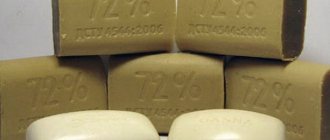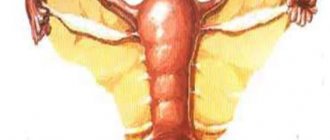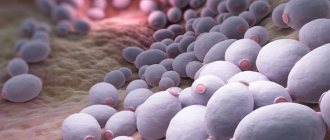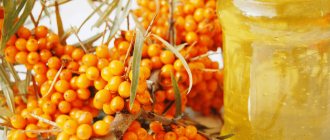The use of herbs for thrush is a gentle method of combating the disease. They can be used in various ways: for oral administration, baths, douching, tamponation, and washing. Before starting treatment, it is necessary to consult a doctor in order to diagnose the presence of individual intolerance to the components of the chosen product.
Dangerous consequences of thrush
Decreased immunity usually leads to thrush
Many factors can provoke the development of thrush, for example, poor nutrition, hormonal imbalance in the body, inattention to personal hygiene rules, decreased immunity or metabolic disorders. The disease has specific manifestations, so many women themselves are able to determine the presence of thrush, especially if they have already encountered this problem more than once.
Treatment of thrush in women is aimed at restoring the acid-base balance. An increase in the acidic environment favors the progression of fungal microflora, which is the cause of candidiasis.
Unbearable itching, irritation of the mucous membrane, the formation of erosions - bring severe discomfort, which develops in everyone without exception with thrush. At first glance, the disease is harmless, but not treated in a timely manner can result in the development of serious pathologies. The formation of a chronic infectious focus leads to the formation of adhesions in the pelvic area. In men and women, thrush causes disruption of reproductive functions, and this is guaranteed infertility.
Classification of candidiasis
Depending on the severity of the disease, the following types of candidiasis are distinguished:
- superficial - the fungus affects the mucous membranes, skin, nails - this is the mildest form of the disease;
- systemic - not only the surface layers are affected, but also internal organs (most often the respiratory and digestive organs), usually this form of candidiasis is diagnosed in people with severe immunodeficiency, as well as in cancer.
According to the flow, the following types of candidiasis are distinguished:
- acute – lasts no more than two months, with timely treatment, complete recovery occurs, there are no complications;
- chronic – is a complication of the acute form of the disease, difficult to treat, since the fungus develops resistance to drugs;
- persistent - sluggish candidiasis, which is difficult to treat.
The most dangerous form of the disease is candidal sepsis, when the entire body is affected by the fungus, and it can be found not only on the skin and mucous membranes, but also in the circulatory system. Candidal sepsis is difficult to treat and can lead to the death of the patient.
Based on localization, there are three types of candidiasis in women:
- vulvovaginal candidiasis – affects the mucous membrane of the vagina and vulva, occurs most often;
- candidal cervicitis – the mucous membrane of the cervix is affected;
- candidiasis vulvitis - affects the vestibule of the vagina and labia; this form of the disease is quite rare.
Traditional methods of treating thrush
Together with medications, doctors advise using herbal treatment according to traditional recipes. At the same time, herbs for thrush should have anti-inflammatory, antiseptic and healing properties. In addition, they must be safe for people with underlying health conditions.
Compared to pharmacological drugs, natural remedies have a number of advantages:
- soft impact;
- good tolerance;
- do not cause harm when absorbed into the systemic circulation;
- Undesirable side effects are practically excluded.
Please note that alternative treatment is effective only in the initial stages of thrush progression. If we are talking about an advanced form of the disease, then medicinal herbs should be used in combination with medications. This eliminates the possibility of complications.
Calendula
Calendula is taken to eliminate microorganisms, for disinfection, and relieve inflammation. Calendula has an antibiotic effect, although it is not an antibiotic.
Calendula decoction is used for douching, baths, and the infusion is taken orally. Calendula has virtually no contraindications. Effective in the treatment of vaginitis, cervical erosion, cystitis, and other inflammatory processes.
You can take only calendula flowers or prepare a decoction with chamomile.
Effective medicinal herbs against thrush
Healing plants have pronounced anti-inflammatory and antifungal properties. They have a general strengthening effect on the body and do not cause adverse reactions.
Calendula (marigold)
The medicinal plant has a disinfectant and bactericidal effect, suppressing infectious and inflammatory processes in the body. Calendula is widely used to treat the initial stage of thrush.
For the treatment of candidiasis, a decoction of calendula is recommended, which should be used for sitz baths and douching. A 2% concentration solution can also be used to prepare medicinal tampons, which are intended for insertion into the vagina.
Calendula infusion or decoction should be taken 3-4 times a day, 30-50 ml for 5-7 days. This medicinal plant can be used for external procedures: rubbing, applications. You should cleanse the mucous membranes and skin with calendula 3-4 times a day.
pharmaceutical camomile
The medicinal plant is considered the most effective remedy against fungal microflora. Chamomile has a pronounced and persistent anti-allergic and anti-inflammatory effect. It is widely used to reduce discomfort during candidiasis, as it has an analgesic and antipruritic effect. The substances included in the finished solution promote the healing of wounds and damaged tissues, restoring the protective functions of the mucous membranes.
Chamomile is used for rubbing, douching and baths. Such procedures make it possible to stop the progression of thrush by preventing the growth of fungal microflora.
It is recommended to take chamomile orally for thrush 5-6 times a day in an amount of 50-70 ml. This allows you to stop the progression of candidiasis and relieve inflammation. It is recommended to treat the affected areas with fungus externally. To do this, you should make applications or baths. For vaginal candidiasis, douching should be done.
Series
The medicinal plant has a calming and antibacterial effect. The prepared solution is widely used to relieve inflammation.
The series is used in the form of decoctions and tinctures for procedures such as douching and baths. The medicinal plant can be consumed orally, which allows it to have a comprehensive effect on the fungal disease. It is recommended to take the infusion or decoction orally in a dosage of 2-3 glasses per day.
Treatment of thrush in succession is also carried out externally. Local treatment is carried out with a concentrated solution 2-3 times a day. This helps reduce the symptoms of the disease and prevent its progression.
St. John's wort
This medicinal plant is widely used to treat thrush. It has an astringent and antibacterial effect. St. John's wort can be used to relieve inflammation.
To treat candidiasis, St. John's wort is used for topical and oral use. This medication is not recommended to be taken orally if blood pressure is abnormal.
St. John's wort is used primarily for external use. With its help, the symptoms of thrush are quickly relieved and the integrity of damaged areas of the mucous membrane is restored.
Medicinal collection
To enhance the effectiveness of the medicinal plant and obtain quick and lasting results, it is recommended to carry out treatment using several components at once.
The special medicinal collection against candidiasis includes the following medicinal plants and herbs:
- Juniper and poplar buds.
- Chamomile and sage.
- Calendula and yarrow.
- Eucalyptus and birch buds.
All medicinal herbs should be taken in 0.5-1 tsp. in dry crushed form and pour boiling water (1 l). The composition is infused in a thermos for 10-12 hours, after which it is filtered. It is recommended to consume the resulting amount during the day, 20 minutes before the main meal.
Other Herbal Therapy Options
Not only herbs for thrush are effective. You can also use fruits and vegetables. For example, freshly squeezed carrot juice helps. It contains a large number of microelements and vitamins that have a beneficial effect on the microflora of the human body.
There are 2 main areas of treatment:
- First of all, in case of intestinal candidiasis and other forms of the disease, it is necessary to drink fresh squeezed juice of this root vegetable. By consuming it internally, you can improve the health of your entire body. The dosage is 200 ml at a time.
- You can also use diluted fresh juice against the vaginal form of the disease. In this case, tampons are a great help. They need to be soaked in the solution. Therapy lasts approximately a week.
Another well-known option against candida is garlic water. This product contains a large amount of phytoncides that eliminate pathogenic microorganisms and thereby restore normal microflora. It is recommended to drink a small amount of this decoction every day or simply rinse your mouth. This is very useful for oral candidiasis, but also has a beneficial effect on the entire body. You can also eat the garlic cloves themselves.
Garlic solution for douching is useful. Perform the procedure before going to bed. Tampons soaked in this liquid are also very effective and will help consolidate the result. To prepare such a solution, you need to grind a few cloves of garlic until it becomes mushy. Then pour in half a cup of water (the liquid should be at room temperature). The product will infuse in just half an hour. Douching should be carried out for at least 10 days. First you need to check your tolerance to garlic.
Features of the use of traditional medicine
In order for traditional treatment to give the expected result, it is necessary to follow the recommendations for the use of medicinal plants. If you do not follow the advice on dosing and use, there is a high probability of developing an allergic reaction or lack of effectiveness of the treatment.
Infusion against thrush
Infusion of medicinal plants (Infusum) is a liquid and dosed dosage form widely used in folk medicine. The infusion can be used for internal use and external application.
Infusions are prepared mainly from the soft parts of plants that release their active substances: flowers, leaves and soft stems. They are prepared mainly from those plants that contain essential oils and substances that decompose with prolonged heating - glycosides.
There are 2 methods of preparing infusions against thrush - with alcohol and with water. Alcohol tinctures are recommended to be used only internally in a dosage of 2-3 tbsp. l. 3 times a day.
Benefits of infusions:
- Pure dosage form.
- Instant results.
Disadvantages include short-term effectiveness and the possibility of adverse reactions during use.
Decoction against candidiasis
Decoction (Decoctum) is a healing aqueous extract obtained from natural plant materials. Used both internally and externally.
Decoctions are prepared from the dense parts of the plant. Most often, bark, roots, hard stems, hard leaves, etc. are used. The raw materials used should not contain volatile substances that decompose when heated.
The effectiveness of decoctions is as follows:
- Diuretic and expectorant properties.
- Slow absorption and long-lasting action.
- Pronounced and persistent therapeutic activity.
Cooking recommendations
Crushed medicinal herbs are used to make traditional medicine. For 1 glass of boiling water, take raw materials at the rate of 1:10.
The preparation of traditional medicine should be carried out in porcelain or enamel dishes. This eliminates the possibility of a composition violation.
Cooking time:
- Infusion on water – from 30 minutes to 12 hours. The finished raw materials are filtered after cooling.
- Infusion with alcohol - from 30 to 45 days. Stored for a long time in a cool place.
- Decoction – 10-15 minutes. Strain while hot and add boiling water to the required volume.
Diagnosis of candidiasis
The diagnosis is made on the basis of anamnesis, questioning and examination of the patient, clinical signs of the disease and is confirmed by instrumental and laboratory tests.
During a gynecological examination, the doctor examines the external genitalia, vaginal mucosa and cervix using special gynecological mirrors and identifies swelling and redness of the mucosa, and also detects white-gray cheesy deposits in its folds.
A smear is also taken from the genital mucosa and examined under a microscope. With candidiasis, colonies of fungi of the genus Candida are found in the smear. These colonies are sown on special nutrient media and their sensitivity to antibiotics is determined, which is extremely important for determining treatment tactics for candidiasis.
To identify possible sexually transmitted diseases, ELISA testing and PCR diagnostics are performed. If indicated, the doctor takes a smear from the urethra and examines it under a microscope. In addition, urine tests, stool tests for dysbacteriosis, ultrasound of the bladder, abdominal cavity, and pelvic organs may be prescribed.
How to increase the effectiveness of treatment
To increase the effectiveness of traditional medicines prepared from medicinal plants, it is recommended to adhere to the following recommendations:
- Follow a diet. Eliminate sweet, spicy and fatty foods from your diet.
- Don't forget about personal hygiene. Carry out cleansing procedures 2-3 times a day using hygiene products with neutral pH.
- Avoid synthetic underwear. It is recommended to wear loose and cotton models, which eliminates the likelihood of disease progression.
Medicinal plants have long been used to treat thrush and are highly effective. With their help, you can prevent candidiasis, increase the effectiveness of drug therapy, or fight the initial stages of the disease. This treatment will be safe even for pregnant and lactating women.
Symptoms of candidiasis
The main clinical signs of the disease are:
- the appearance of white cheesy discharge from the genital tract;
- itching of the external genitalia, which increases as candidiasis progresses;
- the appearance of white rashes on the mucous membranes of the reproductive organs;
- redness, burning in the vaginal area;
- urinary retention;
- cramps and pain during urination;
- pain during sexual intercourse.
In the acute form of the disease, all of the above symptoms appear within a few days, the clinical picture is clear. With chronic candidiasis, symptoms are not expressed. Apart from white discharge and slight itching in the genital area, the woman may not feel anything else. The disease occurs in waves, periods of relative calm are replaced by periods of exacerbation of candidiasis.
Tea tree
Tea tree oil is a natural antiseptic used in medicine and cosmetology. Effectively eliminates fungi and bacteria, so it can be used in the treatment of fungal diseases complicated by bacterial infections. When treating, the oil is not used in its pure form, only diluted (the same applies to other essential oils - juniper, eucalyptus, calendula oil, etc.).
To douche, you need a drop of oil per glass of water.
A cotton swab soaked in a mixture of sea buckthorn oil and 2 drops of tea tree oil is inserted inside overnight.
Before use, a skin allergy test is required.
Sea buckthorn oil
Sea buckthorn oil helps to quickly cure thrush. This product has long been used for the treatment of many gynecological diseases.
The procedure is carried out according to the following scheme:
- Douche with herbal decoction or infusion. This will help clear vaginal discharge. As a last resort, you can douche with boiled water.
- Dip a cotton swab or regular swab into sea buckthorn oil.
- Place the tampon inside and leave overnight.
The product cannot be used in such cases:
- Stomach upset and diarrhea.
- Allergic reactions and individual intolerance.
- Diseases of internal organs for which fat consumption is prohibited are pancreatitis, cholelithiasis, cholecystitis, inflammation of the liver and pancreas.
Sea buckthorn oil can be used during pregnancy and breastfeeding.
The product can be taken orally at 2–3 teaspoons per day. This will help remove the causes of the disease and prevent relapses.
Contraindications for use
Herbs for candidiasis are most convenient as a means of self-medication (at home, if the patient knows his diagnosis). The risk of their overdose is small, and the universality of action of most medicinal plants guarantees against incorrect selection.
But you need to remember that they:
- act as natural allergens and are contraindicated for any autoimmune diseases;
- often toxic to the central nervous system, they should not be used by pregnant women, children, adolescents, or persons with central nervous system disorders;
- can be toxic to the liver and kidneys and are prohibited in case of their pathologies, increased coagulability, thrombosis, varicose veins, hemorrhoids.
Decoctions/infusions with a bitter, tart and spicy taste are not recommended for oral use for cholecystitis (they have a choleretic effect) and stomach ulcers (cause sharp, aching pain).











